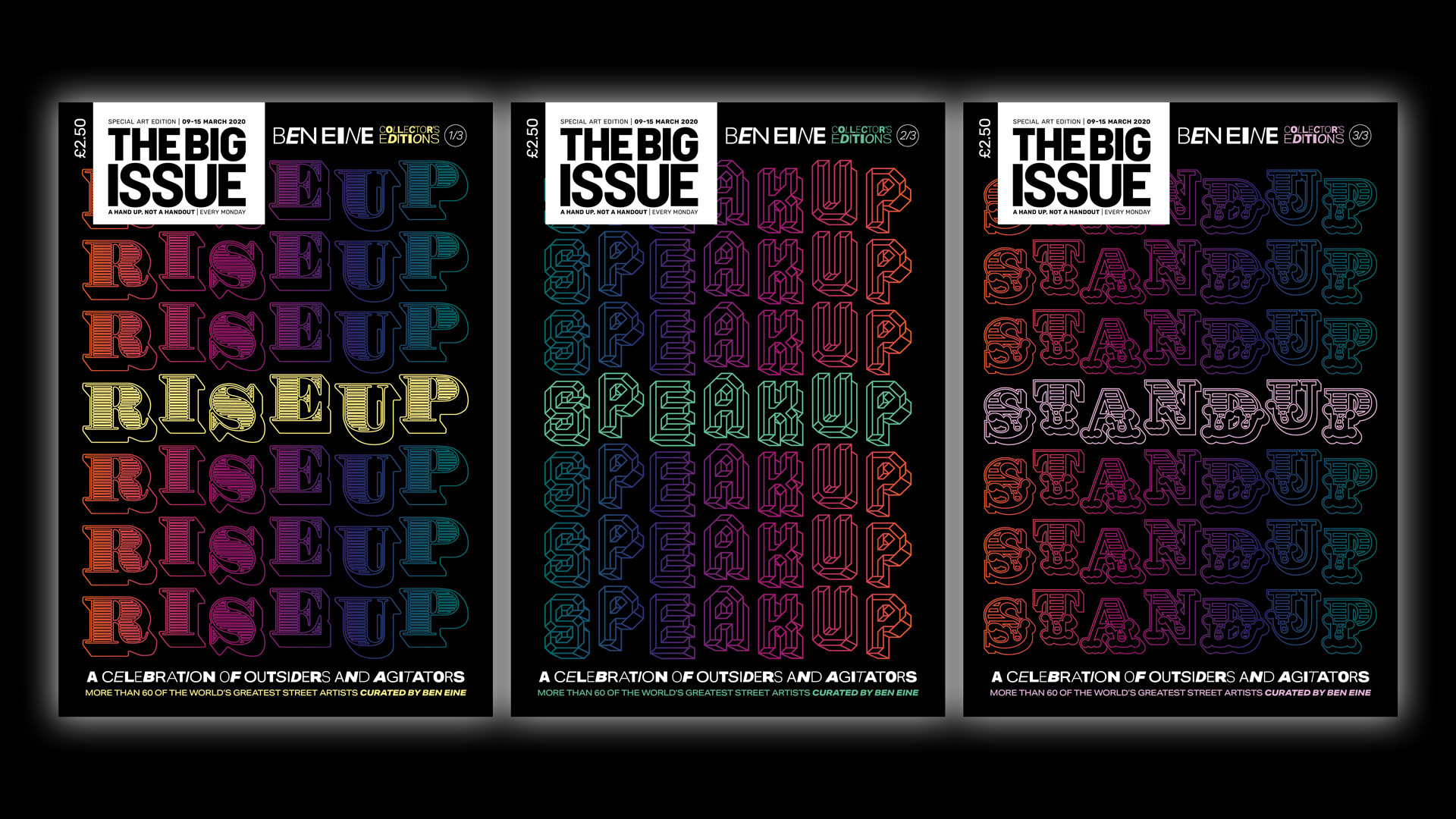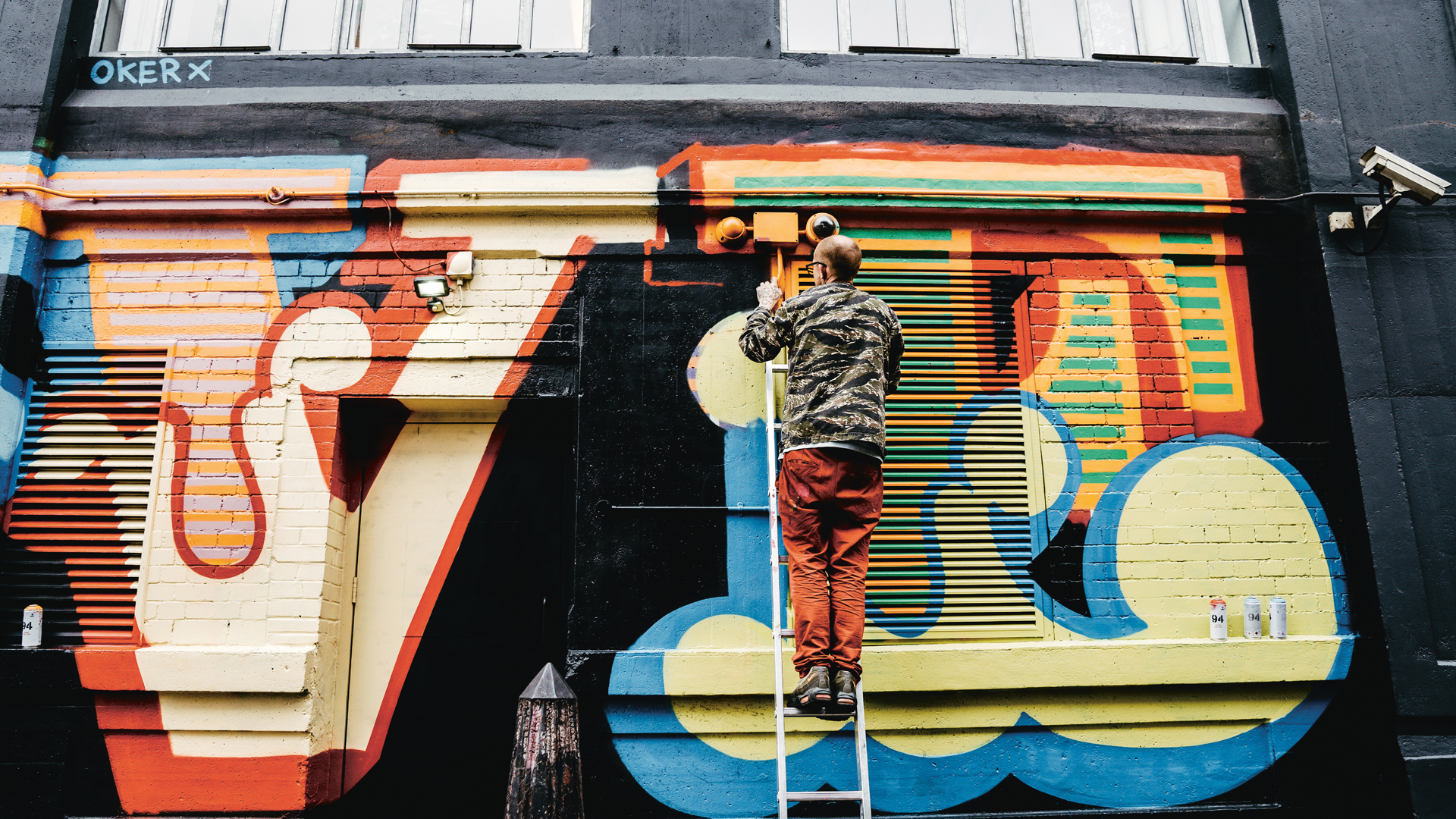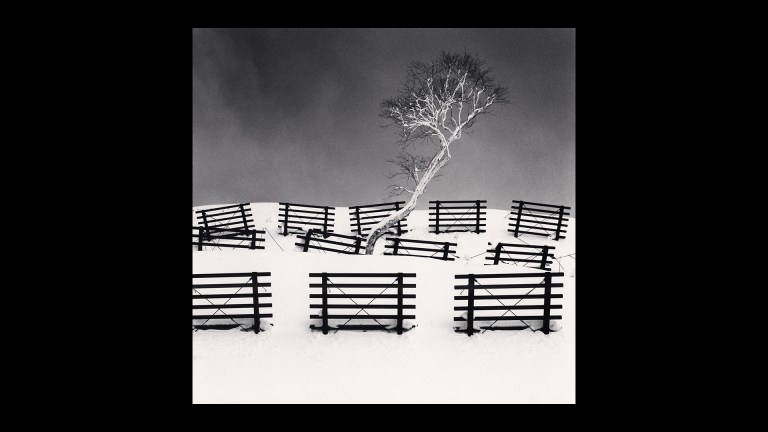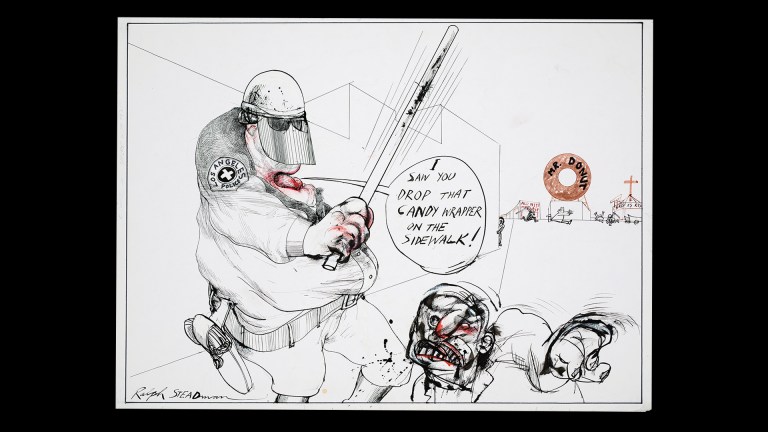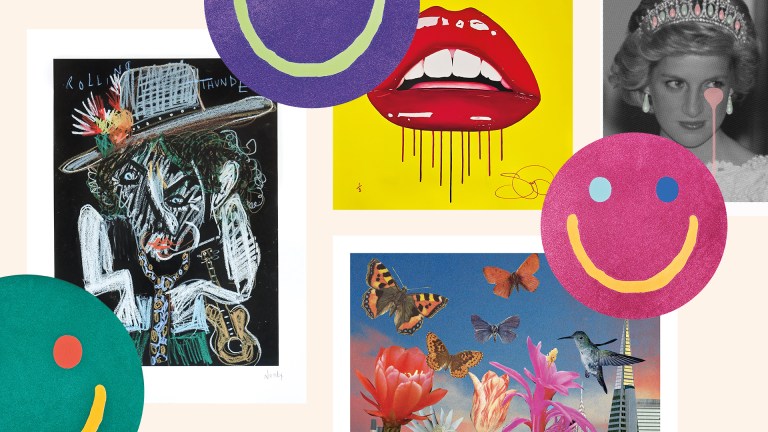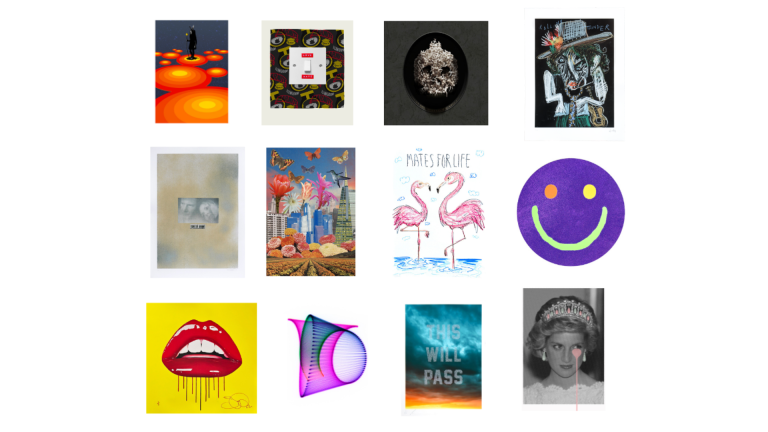The last time I got arrested for graffiti, I got a £7,000 fine and around 180 hours of community service. I knew the next time I got caught doing graffiti, tagging or painting trains, I was going to get sentenced to prison and I really didn’t want to go to prison. I was also getting a little bored of graffiti, I’d done what I set out to do.
I’d been doing it for quite some time and it wasn’t as exciting as it was when I first discovered it. It was around this time that street art was beginning to happen. Banksy had been up in London a few times, there was the Mona Lisawith rocket launcher, and I was looking at this stuff, it just seemed more interesting than graffiti.
How would you define the difference between graffiti and street art?
Graffiti is destructive and done for other graffiti writers or for the person doing the tags, and street art isn’t destructive, street art adds something. A lot of thought goes into street art and its location and the message. This was also the time of the internet, which made a huge difference because if the internet didn’t exist, I wouldn’t be aware of these things going on in Brazil or Paris.
And if the internet didn’t exist, every fan couldn’t have turned into a collector or dealer.
Everything just happened at the right moment. It was around the time that me and an ex-girlfriend had a party at The Dragon Bar, which is this bar that a friend of mine opened up around the back of Old Street roundabout.
Advertising helps fund Big Issue’s mission to end poverty
It’s infamous, The Dragon Bar! There’s apparently a bartender there with the best art collection.
He’s definitely got a good art collection. In the summer, there was this big car park at the back, and we used to do parties in the car park, and me and an ex-girlfriend had a birthday party and that’s where I met Banksy. I said to him, “I really like what you’re doing, I think it’s really interesting,” and he was a little surprised, and we exchanged numbers and we started hanging out and painting stuff together. There wasn’t a gallery in the world that was interested in street artists. They just looked at us as though we were riff raff, you could just see the disdain in their faces when we approached them. That’s why [the printhouse] Pictures on Walls came about. We wanted to make affordable, good-quality screen prints, reproductions of our artwork and get them out there to the fans.
How does street art translate to print pieces?
Pretty easily. It was a way of reproducing our artwork and getting it out there to the people who wanted to have a piece of us. I didn’t want to be sat in the studio making 50 canvases and selling them for £500 each, there wasn’t a market for that, but there was the market for me producing 50 screen prints and selling them for £50 each. And that’s what we did, we were literally reproducing the artwork that we were painting on the streets as a screen-printed poster.
Tell me about Alphabet City…
I did a project in Middlesex Street [in London’s Spitalfields] a few years ago where I painted the entire alphabet, A to Z, in order over 26 shop shutters, all down Middlesex Street. Then for the launch of [studio] OurTypes we got approached by a housing association down in Crisp Street Market, and they had a load of shop shutters covered in graffiti, and they wanted the area to look a bit better. So, we went down there and we did Alphabet City. Typography is sexy. And just unbelievably interesting and fascinating. Typography guides you around a city without you being aware of it. Typography sells you stuff. It’s what you read, it’s how you learn, it’s what you type on your computer.
Advertising helps fund Big Issue’s mission to end poverty
OK, next question: strangest week of your life?
Definitely the week that my painting turning up in the White House was in the press. I’d already made the painting, the painting had gone on an aeroplane with David Cameron and flown to Washington. All of that was quite surreal but the week that it was announced to the press, I literally had press camped outside my studio for an entire week.
For those who don’t know, what was the piece and how did this transaction happen?
This was the first time David Cameron, who was our prime minister at the time, was meeting Barack Obama. For some bizarre reason they had agreed to do an art exchange, and whoever was doing the research on Obama decided that he was a street art fan.
Shepard Fairey, of course.
Shepard did the artwork for his Hope campaign. He was obviously a different type of president, they wanted to give him something funky, and they chose me. I did a painting that said TWENTY FIRST CENTURY CITY. I’ve heard that when they left the White House they took the painting with them, and it’s in one of his daughters’ bedrooms.
Advertising helps fund Big Issue’s mission to end poverty
What were the press asking you?
“How does it feel going from a vandal to having something in the White House?”It was interesting because the story could have gone one of two ways, and luckily the press went with ‘this is a fairytale story, vandal to painting in the White House, a story of success and hope’, rather than ‘What’s David Cameron doing supporting criminals?’
einesigns.com@beneine
